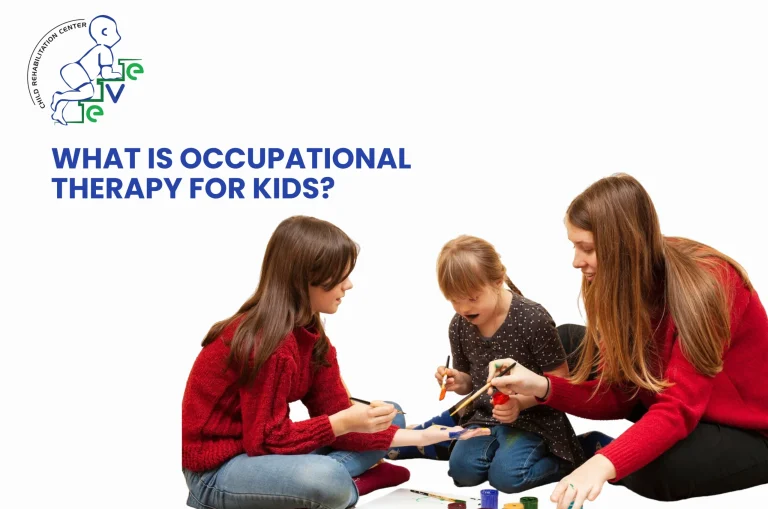
To be honest, most people who struggle with daily tasks because of some physical, mental, or developmental challenge would benefit from OT. Here are some typical groups of people who would benefit from occupational therapy:
- Children with sensory processing issues, ADHD or Autism
- Adults who are recovering from surgery, stroke or accidents
- Seniors with arthritis or dementia
- Babies with developmental milestones (yep, OT is for babies, too!)
What Happens in a Session?
Each session will look different – and that’s the best part! The therapist will learn about your difficulties and goals and will target activities to help you improve.
One session we might be building with blocks to support hand strength. The next session, we might be practicing how to tie shoelaces, use forks and knives or even write. There might be some cool equipment and toys as well!
Occupational therapy benefits
- Increase independence in activities of daily living
- Increase motor and sensory performance
- Increase social and emotional performance
- Improve cognitive functions such as memory and attention
- Help caregivers reduce their stress
OT can truly change lives. It’s not magical — it is care, science, and of course, patience.
What’s the deal with Occupational therapy for children?
When working with children, occupational therapy tends to resemble playtime — and that’s the point! They are learning valuable life skills through therapy in games, crafts, obstacle courses and other fun activities, including:
- Writing & drawing
- Paying attention in class
- Dressing themselves
- Managing their emotions and socializing with children
What is occupational therapy for babies?
Surprised? Believe it or not, babies sometimes also need a bit of OT help – especially if they are a premature baby, have feeding challenges, or are not reaching developmental milestones like rolling, grabbing or shaking.
Intervention early can make a difference. Therapists will work gently with babies and provide some guidance along the way for the parents.
Occupational therapy examples
Let us give you a real feel for what OT can look like:
- A child with sensory issues learns to brush their teeth without meltdowns
- A young adult relearns how to prepare food after a hand injury
- A senior practices walking safely in their home to prevent falling
- A baby learns to sit independently with more muscle control
How Do You Choose the Right Occupational Therapy Center?
Here are a few quick things to remember:
- Choose a licensed therapist with experience
- Ensure that it serves your (or your child’s) needs specifically
- Inquire about individual sessions vs. group
- Pay attention to how they treat you on the first visit — first impressions!
- And of course, trust your gut feelings — you will be more comfortable.
EVE Child Rehabilitation Centre – Best Occupational Therapy center in Kollam
- Expert Therapist’s
Certified and experienced pediatric therapists.
- Child-Centered Services
Personalized therapy plans to meet the need of each individual child.
- Services we provide
- Occupational Therapy
- Speech Therapy
- Physiotherapy
- Special Education
- Behavioral Therapy
- Targeted Areas
- Autism Spectrum Disorder (ASD)
- ADHD
- Cerebral Palsy
- Sensory Processing Disorder
- Development Delay
- Safe and Welcoming Space
Child-friendly decor and positive teen-friendly surroundings for their holistic development.
- Parental Involvement
Parents are provided with regular feedback and individualized occupational tasks completed at home as part of the therapy.
- Early Intervention Programming
We have a targeted emphasis on early diagnosis and planning to help develop milestones.
- Multidisciplinary approach
We work closely with a wonderful team of therapists, psychologists, and special educators developing wraparound care for children.
- Affordable
Accessible and reasonably priced programming and great appointment availability.
Conclusion
Occupational therapy is not only for people “in recovery”; it’s for anyone wanting to live a fuller, more independent life, regardless of age. Whether you want to help a toddler hold a spoon or help grandma navigate the stairs safely, occupational therapy meets people where they are.
If your child or someone you love are experiencing challenges with daily activities, never hesitate to get help. Call Eve,child rehabilitation centre, and speak to our therapist, and see if occupational therapy is the right gentle nudge towards a better, brighter—everyday life.
Frequently Asked Questions
A child with difficulty holding a pencil might work with an occupational therapist to strengthen their hand muscles through fun activities like playing with clay or using special grips. This helps them improve their handwriting and feel more confident in school.
Occupational therapy helps children develop skills for daily activities like dressing, eating, writing, or playing. Physiotherapy focuses more on improving movement, strength, balance, and coordination, such as helping a child walk better after an injury or manage a physical disability.
The main goals are to help children become more independent in their daily routines, improve their motor skills, and support their emotional and social development so they can participate fully at home, school, and in play.
The purpose is to support kids in doing everyday tasks they find challenging due to developmental delays, disabilities, or injuries. It helps them grow, learn, and play to the best of their ability.
